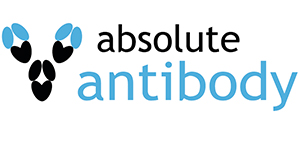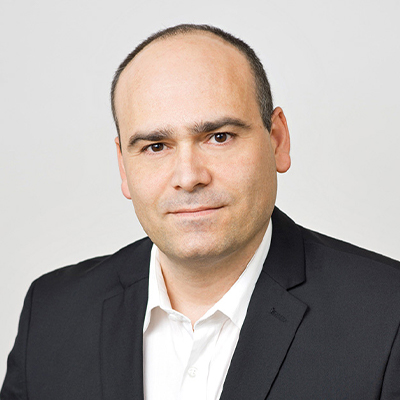Anti-4Ig-B7H3 (8H9)
Anti-4Ig-B7H3 [8H9], Recombinant, IgG1 kappa, Human
SKU
ABAAb03824-10.0-BT
Packaging Unit
1 mg
Manufacturer
Absolute Antibody
Availability:
loading...
Price is loading...
CloneID: 8H9
Antigen Long Description: The antibody was originally generated by immunizing BALB/c mice with human neuroblastoma.
Buffer Composition: PBS only.
Uniprot Accession No.: Q5ZPR3
Specificity Statement: The antibody recognizes the 4Ig Domain Isoform of the Human B7-Homolog 3, 4Ig-B7H3. The epitope that the antibody recognizes appears to be restricted to tumors versus normal tissues.
Application Notes (Clone): The antibody was highly reactive with human brain tumors, childhood sarcomas, and neuroblastomas by immunohistochemistry. The antibody was nonreactive with normal human tissues. 4Ig-B7H3 was immunoprecipitated using this antibody (Modak et al., 2001; PMID: 11358824). In vitro characterization of radiolabeled 8H9 showed that (125)I-8H9 had a K(d) of 10.3nM with an estimated 115,000 binding sites on every HTB82 cell. Further, (125)I-8H9 was retained on the cell surface without significant internalization. In vivo targeting of 125I and 131Ilabeled 8H9 in human RMS xenografts was studied. 125I-8H9 could be used for tumor localization in animals. Instead, mice injected with 131I-8H9 showed a significant suppression in tumor volume (Modak et al., 2005; PMID: 16248769). Further, 131-Iodine-8H9 administered through the Ommaya had favorable pharmacokinetics in non-human primates with minimal toxicities. 31-Iodine-8H9 was used in a phase I study with brain tumors, the antibody was safe and might have clinical utility when added to salvage therapy using conventional modalities in the treatment of 8H9-positive LM/CNS cancers. The antibody detected 4Ig-B7H3 under native conditions in LAN-1, HTB82 and U2OS but not in Daudi cells by western blot analysis. The antibody was unable to recognise the antigen under reducing conditions in Western blot analysis (US20100143245A1).
Antigen Long Description: The antibody was originally generated by immunizing BALB/c mice with human neuroblastoma.
Buffer Composition: PBS only.
Uniprot Accession No.: Q5ZPR3
Specificity Statement: The antibody recognizes the 4Ig Domain Isoform of the Human B7-Homolog 3, 4Ig-B7H3. The epitope that the antibody recognizes appears to be restricted to tumors versus normal tissues.
Application Notes (Clone): The antibody was highly reactive with human brain tumors, childhood sarcomas, and neuroblastomas by immunohistochemistry. The antibody was nonreactive with normal human tissues. 4Ig-B7H3 was immunoprecipitated using this antibody (Modak et al., 2001; PMID: 11358824). In vitro characterization of radiolabeled 8H9 showed that (125)I-8H9 had a K(d) of 10.3nM with an estimated 115,000 binding sites on every HTB82 cell. Further, (125)I-8H9 was retained on the cell surface without significant internalization. In vivo targeting of 125I and 131Ilabeled 8H9 in human RMS xenografts was studied. 125I-8H9 could be used for tumor localization in animals. Instead, mice injected with 131I-8H9 showed a significant suppression in tumor volume (Modak et al., 2005; PMID: 16248769). Further, 131-Iodine-8H9 administered through the Ommaya had favorable pharmacokinetics in non-human primates with minimal toxicities. 31-Iodine-8H9 was used in a phase I study with brain tumors, the antibody was safe and might have clinical utility when added to salvage therapy using conventional modalities in the treatment of 8H9-positive LM/CNS cancers. The antibody detected 4Ig-B7H3 under native conditions in LAN-1, HTB82 and U2OS but not in Daudi cells by western blot analysis. The antibody was unable to recognise the antigen under reducing conditions in Western blot analysis (US20100143245A1).
| SKU | ABAAb03824-10.0-BT |
|---|---|
| Manufacturer | Absolute Antibody |
| Manufacturer SKU | Ab03824-10.0-BT |
| Package Unit | 1 mg |
| Quantity Unit | STK |
| Reactivity | Human |
| Clonality | Recombinant |
| Application | Immunoprecipitation, Western Blotting, Immunohistochemistry, In Vivo Assay |
| Isotype | IgG1 kappa |
| Host | Human |
| Product information (PDF) | Download |
| MSDS (PDF) | Download |

 Deutsch
Deutsch







